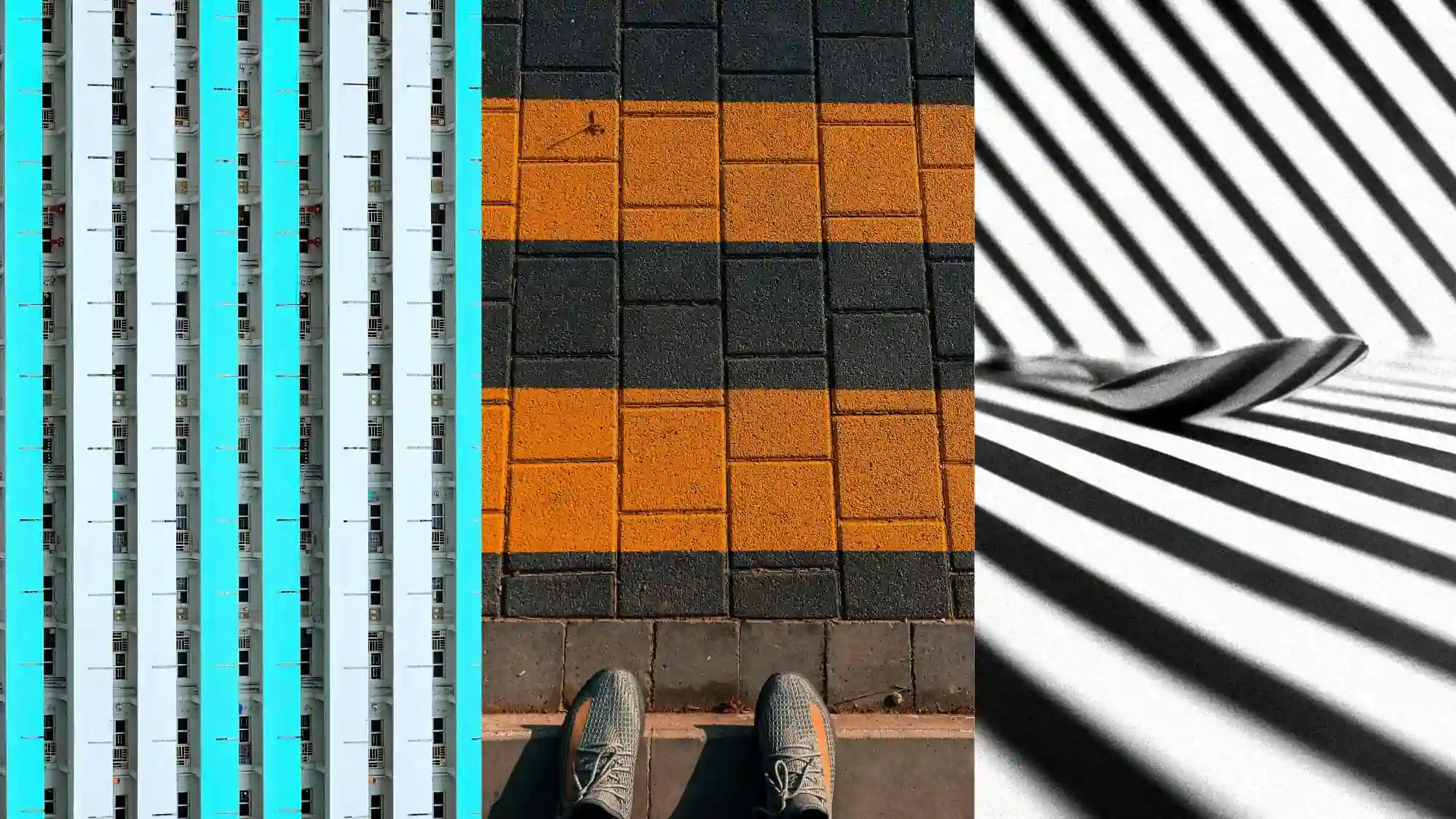Ever wondered how to transform ordinary photos into captivating works of art? By mastering the technique of using leading lines in your photography, you can effortlessly guide the viewer’s gaze and create a sense of depth and movement. Whether you’re an amateur or a seasoned photographer, understanding how leading lines work can take your photography to new heights.
You’ll learn what they are, why they matter, and how to effectively incorporate them into your compositions. Get ready to unlock the secrets that elevate your photographic storytelling from mundane to mesmerizing.
Key Takeaways
- Utilize leading lines in your photography to guide the viewer’s eye and create depth in your images.
- Experiment with different types of leading lines, such as straight, diagonal, converging, and S-curve, to add visual interest to your compositions.
- Use techniques like adjusting your position and incorporating foreground elements to enhance the sense of depth in your photos.
- Pay attention to composition and positioning to effectively incorporate leading lines into your images, leading the viewer’s gaze toward the main subject.
- Explore using curves and paths as leading lines to add a dynamic and engaging element to your photographs.
- Consider incorporating multiple leading lines in your compositions to create a sense of movement and complexity, drawing the viewer into the scene.
Understanding Leading Lines

Concept Overview
When you use leading lines in your photographs, you essentially guide the viewer’s eye through the image. These lines could be roads, fences, rivers, or other elements that create a visual pathway. Understanding this concept allows you to add depth and dimension to your photos. This is crucial because it enhances your images’ overall composition and storytelling.
Incorporating leading lines into your photography has a significant impact on composition. They serve as a tool to add structure and balance to your photos while drawing attention to the main subject. When used effectively, leading lines create visually appealing compositions that captivate viewers.
Composition Impact
The use of leading lines goes beyond just adding structure; they also play an essential role in visual storytelling within your photographs. These lines can convey movement or direction within an image, helping you narrate a story through visuals effectively. You can infuse narrative elements into each shot by skillfully utilizing leading lines in your photography.
Types of Leading Lines
When capturing photography leading lines, you can explore various types to enhance the visual appeal of your photos.
Natural Lines

Nature offers abundant organic leading lines to leverage to add depth and authenticity to your images. For instance, you can use rivers, tree branches, or mountain ridges as natural guides in your compositions. Incorporating these natural lines leads the viewer’s eyes through the image and creates a strong connection with the environment.
Man-Made Lines

In urban settings, numerous opportunities exist to incorporate artificial leading lines into your photography. You can utilize roads, bridges, or architectural elements for structured compositions that offer a modern and geometric aesthetic. These manufactured lines provide a sense of order and direction while adding an interesting visual element to your photographs.
Implied Lines
Implied lines suggest direction without being physically present in the composition. Consider using eye contact or gestures as implied leading elements in portrait photography to guide the viewer’s gaze. By incorporating implied lines effectively, you can evoke strong emotional responses from those viewing your photos.
Intersecting Lines
Intersection points where multiple leading lines converge to create dynamic visual interest in your compositions. Experiment with different ways intersecting lines add complexity and depth to your images while drawing the viewer’s attention toward specific focal points within the photograph.
Techniques for Depth

Using wide lenses can significantly impact the depth of your photos. Wide-angle lenses are perfect for emphasizing the effect of leading lines on perspective. They allow you to capture expansive scenes with prominent leading lines, drawing the viewer’s eye into the depth of the image.
Ensure that your leading lines reach a clear focal point in your photo. The converging lines should emphasize and guide attention to this focal point, anchoring the viewer’s gaze within the composition. Doing so creates a sense of depth and dimension in your photograph, making it more engaging and visually appealing.
Consider how lighting influences the perception of leading lines in your photos. Experiment with different lighting conditions to enhance their impact. Shadows and highlights along these lines can produce dramatic effects, adding depth and dimension to your images.
Composition and Positioning

When capturing photography leading lines, it’s crucial to understand how different types of lines can enhance your compositions. Let’s delve into the impact of vertical, horizontal, and diagonal lines in guiding the viewer’s attention and creating dynamic visual narratives.
Vertical Lines
Vertical lines in photography hold a commanding presence, drawing the viewer’s gaze upwards or downwards. By leveraging converging lines, you can lead the viewer towards a central point of interest within your image. For instance, towering skyscrapers or tall trees can serve as compelling elements for guiding the eye toward a specific subject or focal point in your composition.
Utilize vertical structures such as architectural columns or towering trees to create a sense of grandeur and strength in your photos. These elements guide understanding composition and add depth and perspective to your images.
Horizontal Lines
Incorporating horizontal lines into your photographs conveys stability and tranquility, evoking feelings of calmness and balance within an image. Whether capturing serene shorelines at sunset or utilizing horizons as leading guides, horizontal elements play a pivotal role in creating harmonious compositions that resonate with viewers emotionally.
By strategically placing horizontal features like tranquil shorelines or expansive landscapes within your frame, you can instill a sense of peace and equilibrium into your photographic compositions while guiding the viewer through the visual narrative.
Diagonal Lines
Diagonal lines inject energy and movement into photographs, adding dynamism to visual storytelling. Incorporate dynamic diagonal elements such as winding roads or staircases to infuse action and excitement into your images while guiding the viewer along an intriguing visual journey.
Curves and Paths

When capturing photography leading lines, it’s essential to understand the distinct visual impact of S-curves. These graceful, winding elements add elegance and fluidity to your compositions. For instance, incorporating a winding river or road can create a captivating flow throughout your image, guiding the viewers’ eyes in a natural and visually appealing manner.
It’s crucial to distinguish between paths that guide viewers through an image and actual leading lines. While paths guide the composition, defined leading lines serve as powerful visual cues that direct attention toward specific focal points or areas of interest within the frame. By incorporating both paths and distinct leading lines into your photography, you can achieve varied visual storytelling effects based on your creative vision. Knowing when to emphasize paths or defined leading elements will allow you to craft compelling narratives within your images.
Multiple Leading Lines

Incorporating multiple sets of leading lines into your photographs can take your compositions to the next level. By layering different leading elements, you create visually rich and engaging images that draw the viewer’s eye into the scene. For example, a road could intersect with a fence line, guiding the viewer’s gaze through the image in multiple directions.
Balancing multiple leading lines is essential to avoid overwhelming the viewer’s eye. When done effectively, this technique adds complexity and depth to your photos without creating visual chaos. Imagine capturing an image where train tracks converge with a row of trees; this creates an intricate web of leading lines that guide the viewer throughout the entire photograph.
Overcoming fear is crucial when experimenting with incorporating leading lines creatively into your photography. Challenge yourself to explore unconventional or challenging compositions involving leading elements. Embrace new perspectives and angles as you push past any fear of failure in utilizing these powerful compositional tools.
Editing and Impact
The impact of your images can be significantly enhanced through strategic editing techniques. You can change the result of your photos by tweaking contrast, clarity, or selective sharpening during the post-processing stage. By doing so, you emphasize the guiding elements in your photos, making them more impactful.
Color correction and tonal adjustments are also essential in highlighting leading line details during editing. These changes help ensure the guiding elements stand out effectively in your photographs. When these adjustments are made thoughtfully, they profoundly affect how viewers engage with and interpret your images.
Personalizing your photography by seeking out unique sources of leading elements is another way to infuse individuality into your work. Incorporating personal stories or experiences into how you utilize leading line techniques within your images allows for a deeper connection with viewers. It’s essential to allow your style and perspective to shine by infusing personal connections into leading line concepts.
Learning from Others

Learning from professional photographers can provide valuable insights. By studying their works, you can understand how they effectively use guiding elements in their compositions. For example, renowned photographers often share tips and techniques for integrating leading line concepts into their practice. These insights can help you grasp the nuances of using leading lines to create compelling and impactful images.
Curating a diverse portfolio that showcases your adeptness at employing leading-line principles is crucial. Your portfolio should feature a variety of genres, demonstrating your versatility in utilizing guiding elements across different photography styles. By presenting a cohesive body of work that highlights your understanding and skillful application of leading line techniques, you can showcase your expertise to potential clients or art enthusiasts.
Incorporating professional tips into your practice and creating a well-rounded portfolio will elevate your understanding and mastery of photography leading lines.
Summary

Now that you’ve grasped the concept of leading lines and explored the various types and techniques for utilizing them in your photography, it’s time to put your newfound knowledge into practice. Remember, it’s not just about knowing the theory; it’s about getting out there with your camera and experimenting with different compositions and positions to see what works best for you. Be bold and play around with curves, paths, and multiple leading lines to add depth and visual interest to your photos. Once you’ve captured your shots, consider the impact that editing can have on enhancing the effect of leading lines.
As you continue your photography journey, keep learning from others and seeking inspiration from their work. Whether through online resources, photography books, or attending workshops and exhibitions, immersing yourself in the world of leading lines will only further enrich your skills and creativity. So, grab your camera, hit the streets, and let leading lines lead the way to captivating compositions!
Frequently Asked Questions
FAQ
What are leading lines in photography?
Leading lines in photography are compositional elements such as roads, fences, or buildings that lead the viewer’s eye into the photo. They create a sense of depth and guide attention towards the main subject, adding visual interest to the image.
How can I effectively use leading lines in my photographs?
To effectively use leading lines, look for natural or artificial elements like paths, rivers, or bridges that draw attention to your subject. Experiment with different angles and perspectives to make the most of these guiding lines within your composition.
Are there different types of leading lines used in photography?
Various leading lines include horizontal, vertical, diagonal, converging, and parallel lines. Each type can evoke different emotions and impact how viewers perceive an image.
What editing techniques can enhance the impact of leading lines in a photograph?
Editing techniques such as adjusting contrast and clarity can help emphasize leading lines. Selective dodging and burning to highlight or darken specific areas along the line can further enhance its impact on the overall composition.
Can you provide tips for learning from others’ use of leading lines in photography?
Observing how other photographers utilize leading lines is a great way to learn. Analyze their work by studying compositions where they have effectively incorporated leading lines to understand how they contribute to creating compelling images.



